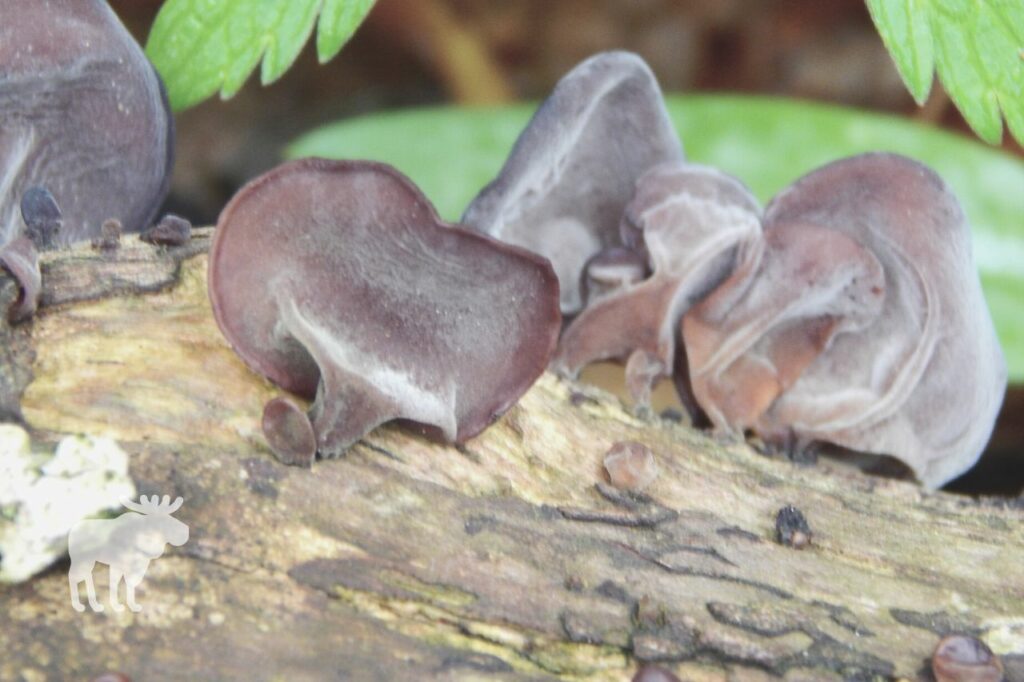If you’re getting into the world of wild mushroom foraging, you may be amazed at just how many types of mushrooms there are. One that may have your attention is the wood ear mushroom, which has a unique appearance and texture when compared with other fungi. So, you may be wondering, where do wood ear mushrooms grow in the wild? How can you identify them and tell them apart from other, similar-looking species? Keep reading! In this article, we’ll answer these questions and more.
What You'll Learn Today
What Are Wood Ear Mushrooms?

Wood ear mushrooms are a unique-looking fungus that goes by many names, including jelly ear, tree ear, and black fungus. All of these names are fairly accurate in describing the appearance of the mushrooms.
These mushrooms are shaped roughly like a human ear and can grow between one and six inches in size. They have a flexible, gelatinous texture and a very thin, velvet-like coating.
These mushrooms have neither stems nor gills. Their crinkly cups generally face downward.
Wood ear mushrooms are generally light to dark brown in appearance, though they darken with age and will appear black when dried. Their spores range from white to cream-colored to yellow and, when viewed under a microscope, have an oblong, sausage-shaped appearance.
Wood ears are popular edible and medicinal mushrooms, especially in various Asian cuisines and traditional medical practices. They are nutritious mushrooms that are high in protein, low in fat, and contain many vitamins and minerals.
These mushrooms have little to no flavor of their own, but they are excellent at absorbing other flavors. For this reason, they blend well into a variety of recipes, including soups, salads, and stir-fries (here’s our guide on how to clean them).
Their main selling point, aside from their nutritional benefits, is their chewy, crunchy texture. They add a unique element to a variety of dishes that is difficult to resist, even if you don’t typically like mushrooms.
To learn more about these mushrooms, check out this video:
Where to Find Wood Ear Mushrooms
Wood ear mushrooms can be found growing wild in temperate and subtropical areas throughout the world. They are most common in the fall months, but will grow any time of the year in cool, shady, moist conditions.
The mushrooms grow easily on deciduous trees, especially those that are dead or beginning to decay. They may also be found growing on stumps, logs, or other pieces of rotting wood.
They grow predominantly on dead and decaying elder trees, though they will grow on many other deciduous trees as well, including beech and ash.
The mushrooms can also be cultivated; in fact, more than 100,000 tons of wood ear mushrooms are produced in Asia every year. They are usually grown in sawdust, harvested, dehydrated, and sold.
Though Asia is the largest producer of the mushrooms, you can grow them at home as well. All you will need is a growing kit and a mild, humid environment for growing them in.
How to Identify Wood Ear Mushrooms?

Wood ear mushrooms are easily identifiable and are considered one of the best mushrooms for newbie foragers. This is because they have few, if any, lookalikes.
According to the Missouri Department of Conservation, wood ears may be confused with certain species of cup mushrooms. That said, there are many differences between wood ears and the various cup mushroom varieties.
Most notably, the caps of wood ear mushrooms always face downward, like an umbrella. Cup mushrooms, as their name suggests, have caps that curve upwards–like a cup.
What’s more, wood ear mushrooms have a much more flexible, rubbery, jelly-like texture than cup mushrooms. The caps bend easily and may feel soft or spongy between your fingers.
Meanwhile, cup mushrooms have a much more firm texture, like typical mushrooms. They may appear gelatinous, but they will feel much stronger and will not bend as easily as wood ear mushrooms–in fact, they would be more likely to bruise or break under pressure.
If you want to make certain of your mushroom’s identity, take a spore print. As mentioned above, wood ears have white to yellowish spores that appear roughly sausage-shaped when you’re looking at them under a microscope.
Wood ears are easy to identify because of their crinkly ear-shaped appearance and jelly-like texture. That said, if you’ve never foraged for mushrooms before or you aren’t completely sure of the identification, it may be best to have your harvest checked by a more experienced or professional forager before you eat them.
Conclusion
Wood ear mushrooms are unique mushrooms that can be found growing in temperate and subtropical forests worldwide, though they are most commonly found in Asia and North America. These mushrooms grow in mild, humid parts of the year on dead and decaying wood, especially elder, beech, and ash.